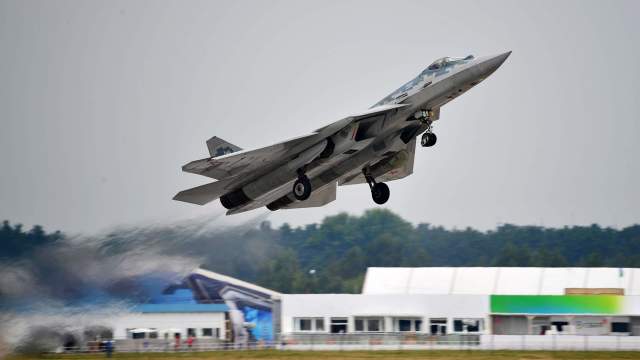And what role is assigned to them in a special military operation
Deliveries of the fifth-generation Su-57 aircraft to the Russian Aerospace Forces will be increased, Russian Prime Minister Mikhail Mishustin said at a meeting of the Coordinating Council for Ensuring the needs of the armed Forces on July 18. At the end of June, the industry has already handed over to the Ministry of Defense the next batch of new Su-35S. The production of other machines of the Sukhoi Design Bureau is also accelerating. Izvestia, together with Dmitry Kornev, the founder of the Military Russia portal, dealt with what aircraft the famous design bureau of the Russian Army supplies today and what role they play in a special military operation.
Redundant features
The newest Russian fifth-generation fighter Su-57 is produced by the Komsomolsk-on-Amur Aviation Association (KnAAPO) named after Gagarin. The main features in demand in modern combat aviation are reduced radar visibility, the latest strike weapons, a unique radar complex and the most advanced information capabilities.
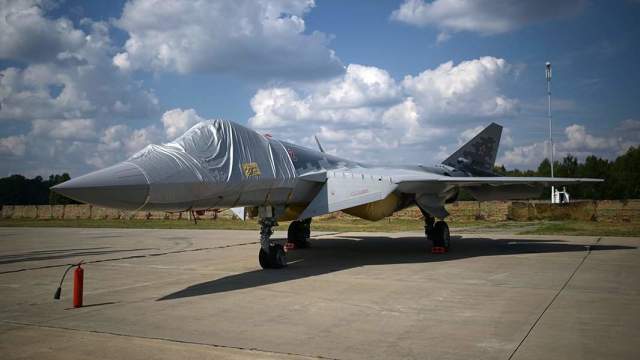
Multifunctional Su-57 fighter in Kubinka
Image source: Photo: RIA Novosti/Vladimir Astapkovich
The Su-57 can carry out air–to-ground missions at a range of up to 300 km using the latest X-69 cruise missiles, as well as using a wide range of guided aerial bombs, X-38 missiles and other modern means of destruction. The aircraft can also conduct highly maneuverable air combat with any modern fighters of a potential enemy at short, medium and long ranges.
For its airspace, the combat capabilities of the Su-57 are currently redundant, but this does not prevent the combat units of the Russian Aerospace Forces from practicing the combat use of the newest fighter, honing its interaction with other aircraft and drones.
The production rate of the Su-57 really needs to be increased, since before the military operation, aircraft of this type were produced in fairly limited quantities — two to four units per year. If only two aircraft were produced in 2021, then six aircraft were transferred to the Russian Aerospace Forces in 2022, and their production is expected to increase in 2023. According to plans, the army will receive 76 Su-57s by 2028.
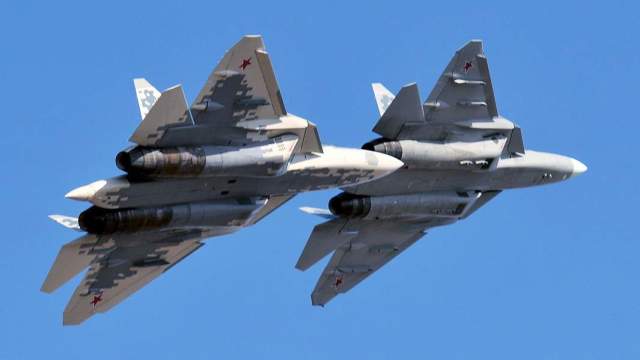
Multifunctional Su-57 fighters during flight
Image source: Photo: RIA Novosti/Andrey Kataev
A serious remotorization of the Su-57 is expected — the aircraft will receive a new engine, which will further increase its flight and tactical and technical characteristics. It is likely that additional contracts will be signed for the production of the updated Su-57 and the production of the Su-57 will continue in large quantities after 2028.
Drone on the hunt
In conjunction with the Su-57, an inconspicuous S-70 Hunter UAV can be used, which is also created by the Sukhoi Design Bureau. The drone can independently strike ground targets protected by powerful air defense, according to the target designation from its leading Su-57 aircraft. The development of such an application of the drone–aircraft pair was conducted shortly before the SVO, and the first reports of the use of the Hunter drone in the SVO appeared at the end of June 2023.
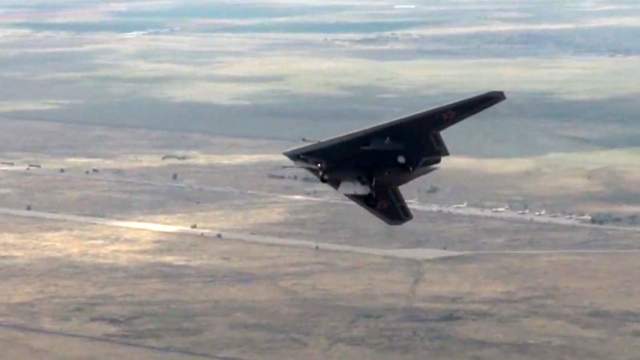
Unmanned aerial vehicle "Hunter"
Image source: Photo: RIA Novosti
Such drones are the future of front—line aviation - independent work to break through and destroy enemy air defenses and interaction with Su-57 strike aircraft. The drone has unique characteristics: range — up to 6000 km, maximum flight speed — 1400 km / h, combat load — up to 3 tons of bombs and guided munitions.
In real time
The multi-purpose fighter of the 4++ generation Su—35S is one of the main machines for gaining air superiority in the special operation zone. The most perfect reincarnation of the legendary Su-27 today is capable of performing both strike missions and operations to destroy enemy aircraft.
The modern Su-35S differs markedly in its capabilities from the first production machines of this type. The aircraft has been in production since 2008, and more than 120 Su-35S have been produced until mid-2021. Today, the fighter is the carrier of the ultra–long-range R-37M air-to-air missile with a range of more than 300 km. For medium-range aircraft, ammunition of the R-77 type is used. With it, the Su-35S can destroy any air targets of the Armed Forces of Ukraine without entering the air defense zones behind the contact line of the sides of their own.
Su-35S multi-purpose fighter during landing
Image source: Photo: RIA Novosti/Evgeny Odinokov
The Su-35S also carries anti-radar missiles of the X—31PM type on duty sorties - any detected radar of enemy air defense systems can be destroyed literally in real time.
The aircraft is mass—produced by the same KnAAPO - and not only for the Russian Aerospace Forces, but also for export. This is one of the most technologically advanced samples of the modern Russian aviation industry, and an increase in its production is possible.
Su-34
A front-line bomber from the Novosibirsk Production Association named after Chkalov. From 2008 to 2022, more than 100 aircraft of this type were produced and delivered to the Russian Aerospace Forces, today they form the basis of front-line strike aviation.
The aircraft is specially adapted for striking ground targets with both unguided and precision guided missile weapons. Production of the Su-34 continues now under an additional contract signed in 2020 for the production of 24 aircraft. In the future, production of an upgraded version of the Su-34M with a modified set of equipment will be launched.
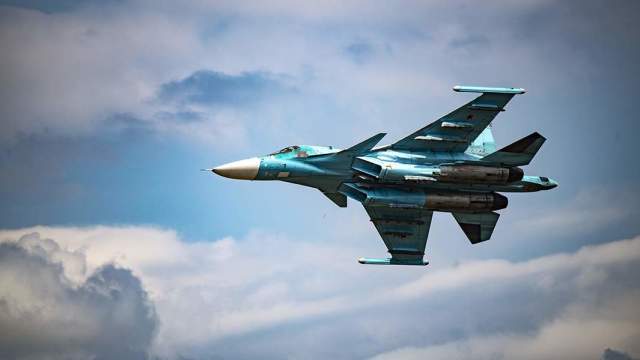
Flight of the Su-34 fighter-bomber
Image source: Photo: RIA Novosti/Valentin Kapustin
The Su-34 has been taking part in combat operations since the first days of its operation — it ensures the execution of strike missions both in the interests of the ground forces and in independent operations to suppress air defense, destroy warehouses and transport infrastructure of the Armed Forces.
Shock missions
The Su-30 was originally created as an export multipurpose fighter and has been successfully delivered abroad in several variants since the 1990s. It was produced by the Irkutsk Aircraft Factory. In 2012, based on the modification of the Su-30MKI, which was supplied to India, a variant of the Su-30SM was developed for the Russian Aerospace Forces.
Today, the army has almost a hundred Su-30SM units of several series. In addition, the Su-30SM and Su-30SM2 are in the aviation of the Russian Navy. The improved multifunctional fighter is unified with the Su-35S aircraft in many systems and weapons, but, unlike its counterpart, it is controlled by the Su-30 crew of two people.
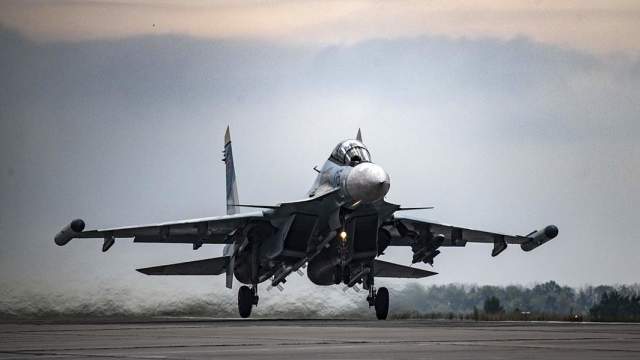
Su-30SM multi-purpose fighter
Image source: Photo: RIA Novosti/Valentin Kapustin
In the special operation zone, Su-30SM aircraft were involved in carrying out strike missions with the use of X-31 and X-58 anti-radar missiles, and participate in patrolling the airspace. To increase the production of Su-30SM2 aircraft, there are also opportunities at the Irkutsk Aircraft Factory, and they are likely to be used.
Thus, today there are four combat vehicles with the Sukhoi brand and one of the most modern heavy attack drones in production. Including on the shoulders of these aircraft lay the main combat work of the SVO. And in 2023 there will be more of these cars.
Dmitry Kornev
